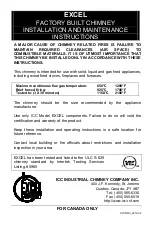
Operating manual Fireplace inserts S3
EN
5 | Technical data
27
Specifications for fire- and heat protection (specifications in mm, Promasil 950 KS) Insulation layer thicknesses
48x51x51
S3
48x72x51
S3
64x33x51
S3
75x35x45
S3
Vuur
Drie
60
Vuur
Drie
80
b: Safety distance, lateral [mm]
100
100
60
60
90
90
a: Safety distance, front [mm]
80
80
100
100
110
110
Combustion air
48x51x51
S3
48x72x51
S3
64x33x51
S3
75x35x45
S3
Vuur
Drie
60
Vuur
Drie
80
Outside air connection [Ø mm]
150
150
125
125
150
150
Combustion air requirement [m³/h]
34
49
34
32
30.6
43.2
Use for special design
48x51x51
S3
48x72x51
S3
64x33x51
S3
75x35x45
S3
Vuur
Drie
60
Vuur
Drie
80
Hypocaust heating**)
Suitable subject to technical rules
*) under examination
**) The Austroflamm appliances marked with “suitable subject to technical rules” are suitable for oper-
ation in closed systems (hypocausts)
***) at the device connection at nominal heat efficiency
The design of the hypocaust must ensure the transport of heat and the even distribution of heat within
the cladding so that no part of the heating chamber can be overheated. If necessary use the calcula-
tion diagram for hypocausts from Austroflamm.
The size of the heat-dispensing cladding surfaces must be matched to the heat generator.
The necessary insulation thicknesses specified in the technical data for the protection of building sur-
faces adjacent to the heat-producing appliance have been determined with open air grilles in continu-
ous operation and must therefore by supplemented by suitable measures (e.g. rear ventilation).
The closed system must be calculated and designed in accordance with the technical rules of the
stove- and air heating constructors trade association.
When setting up a closed system with Austroflamm fireplace inserts with sliding door, the temperature
resistance of the cable drum is 250 °C. This maximum permissible ambient temperature must be ob-
served! If the hypocaust is built to the specifications of the TR OL, this material temperature should
never be reached. A rear ventilation of these components may need to be planned.
















































